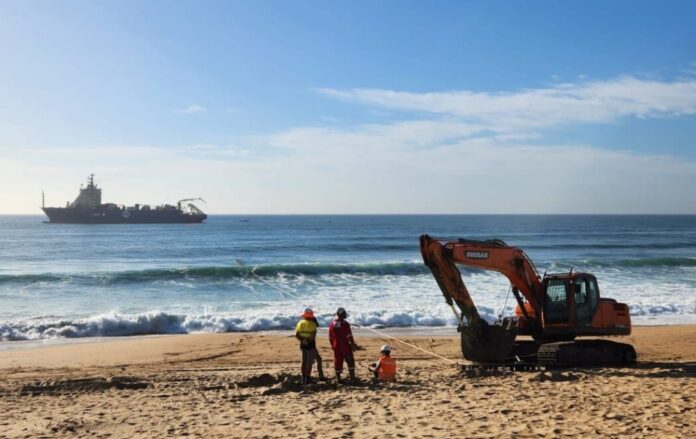Links Asia, Africa, Europe, Middle East
The world’s largest subsea cable system, the 2Africa, has now officially connected with data centre OADC Durban in the KwaZulu-Natal (KZN) region of South Africa. This offers the province and country a huge increase in international capacity and the promise of more reliable internet and other connectivity services. The 2Africa cable project was launched in May 2020 to boost capacity, quality and availability of internet connectivity between Africa and the rest of the world. The arrival of the 45,000km, 180 Terabits per second (Tbps) 2Africa cable system in Amanzimtoti, 25km south of Durban, will massive international capacity for telcos to connect businesses and individuals throughout South Africa.
The 2Africa cable consortium comprises China Mobile International, Meta (AKA Facebook), MTN GlobalConnect, Orange, center3 (AKA Saudi Telecom Company), Telecom Egypt, Vodafone/Vodacom and WIOCC. This landing, into OADC’s 4MW-capable open access OADC Durban facility in Amanzimtoti, is 2Africa’s fourth on the coast of South Africa – two in the Western Cape (Yzerfontein and Duynefontein) and one in the Eastern Cape (Gqeberha).
OADC Durban went live in April 2022 and will ultimately deliver 4,200m2 of flexible space, supporting 2,000m² of IT white spaced offices. “It delivers the location, scale and client focus required to maximise opportunities for carriers, content providers, fixed and mobile network operators, and Internet Service Providers (ISPs) to host their equipment and applications, and to increase the speed and reliability of the connectivity and services they provide to their customers, said a WiOCC release.
Landing 2Africa into carrier-neutral OADC Durban means service providers can access international capacity and onward, domestic and intra-Africa connectivity on a fair and equitable basis, which will encourage and support the development of a healthy internet ecosystem, said WIOCC. Once the system is installed, businesses and consumers will be encouraged by the jump in quality, reliability and immediacy and start investing time and money on internet services like telecommuting, high-definition video streaming and advanced multimedia and mobile video applications.
The 2Africa project underpins further growth of 4G, the continued roll-out of 5G and fixed broadband access, said WIOCC, since it connects the underserved and rural areas and creates and network resilience between KZN and the rest of South Africa. As a gateway to international connectivity, the cable’s landing in Amanzimtoti will also help to drive the upgrade and expansion of telecommunications networks in KZN and surrounding provinces.
Within two to three years of becoming operational, 2Africa could spur economic impact worth around $36.9 billion, estimated a study by RTI International. This is the equivalent to 0.42-0.58% of Africa’s GDP. “The subsea cable system [gives] communities access to education, healthcare, jobs and financial services,” said WIOCC Group Chief Executive Officer, Chris Wood. The whole region will realise the economic and social benefits of seamless connectivity, according to Wood.
As a fibre pair investor in the 2Africa systems, WICC will be “greatly expanding and diversifying WIOCC’s capacity inventory,” said Wood, who is wating to see how “the needs of our content provider and cloud operator clients [and] wider wholesale community” evolve.


